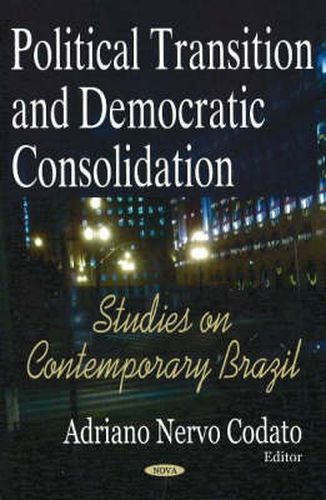Readings Newsletter
Become a Readings Member to make your shopping experience even easier.
Sign in or sign up for free!
You’re not far away from qualifying for FREE standard shipping within Australia
You’ve qualified for FREE standard shipping within Australia
The cart is loading…






How does a political regime evolve? How (and when) does an old regime turn itself into a new one? When does a political change occur? What is the first thing to change in a political transformation and what is the degree and the speed of this change? What are the causes of this transformation? And when exactly does this change end? When the new regime is completely established? What concepts can we use to understand each moment of the political transition? How can we think about the whole process? In 2005, Brazil completes twenty continuous years of civil government, a striking exception in the country’s history, all of then, except one, chosen by direct elections. The long transition from the dictatorial regime to a non-dictatorial one (not necessarily democratic) begin in 1974. Fifteen years after, in 1989, a new stage in this process begins, overcoming the instability of the national political scene. From this moment on, the consolidation of democracy becomes the central problem of the national political agenda. There are many ways of telling and explaining this history. This book presents a survey of the different interpretations of this important period of Brazilian history and, at the same time, outlines some criticisms on the mainstream interpretations in Brazilian Political Science.
$9.00 standard shipping within Australia
FREE standard shipping within Australia for orders over $100.00
Express & International shipping calculated at checkout
How does a political regime evolve? How (and when) does an old regime turn itself into a new one? When does a political change occur? What is the first thing to change in a political transformation and what is the degree and the speed of this change? What are the causes of this transformation? And when exactly does this change end? When the new regime is completely established? What concepts can we use to understand each moment of the political transition? How can we think about the whole process? In 2005, Brazil completes twenty continuous years of civil government, a striking exception in the country’s history, all of then, except one, chosen by direct elections. The long transition from the dictatorial regime to a non-dictatorial one (not necessarily democratic) begin in 1974. Fifteen years after, in 1989, a new stage in this process begins, overcoming the instability of the national political scene. From this moment on, the consolidation of democracy becomes the central problem of the national political agenda. There are many ways of telling and explaining this history. This book presents a survey of the different interpretations of this important period of Brazilian history and, at the same time, outlines some criticisms on the mainstream interpretations in Brazilian Political Science.